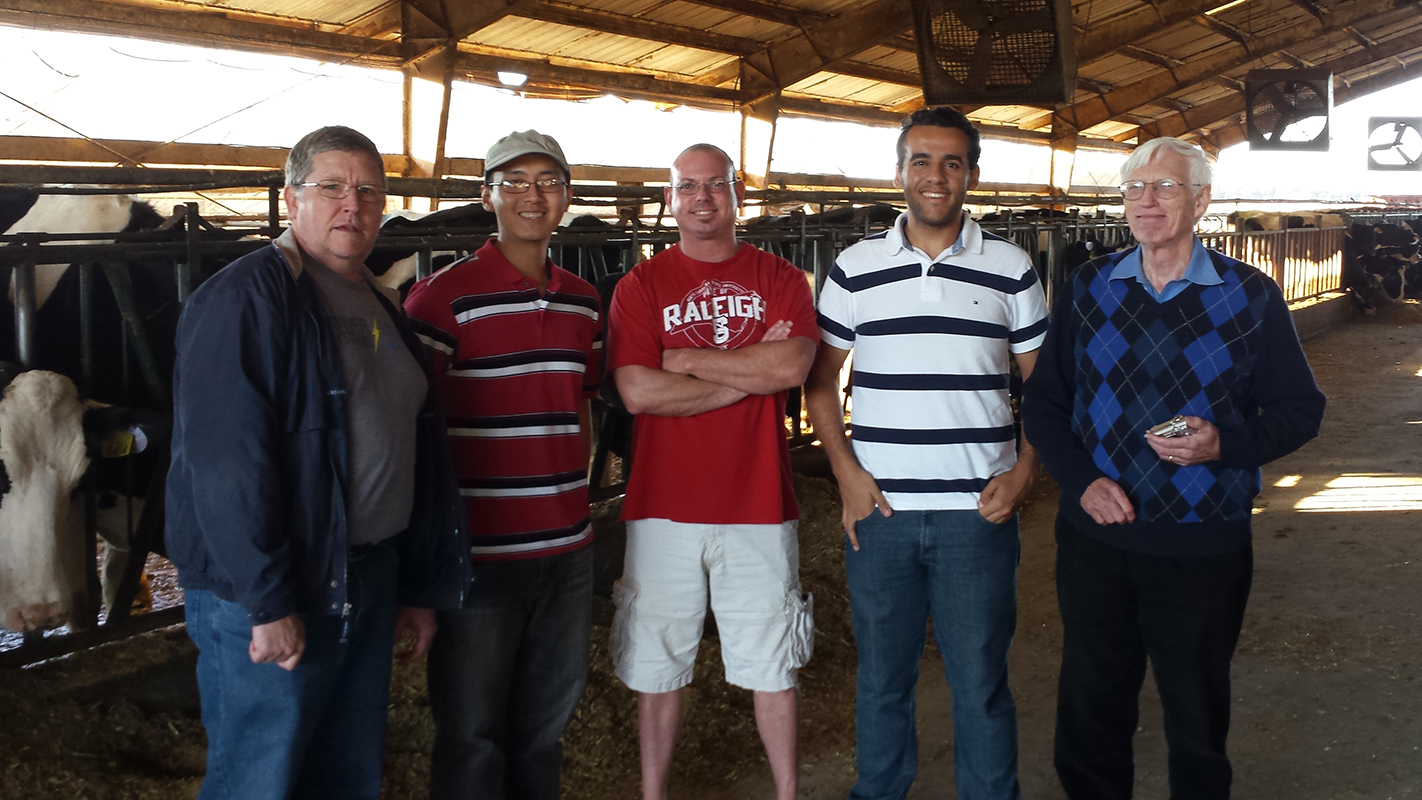How a Team of Engineers Is Trying to Save Dairy Farmers Time (and Money)

Tucked away in the corner of a laboratory in Raleigh, five electrical engineers are engaged in an unlikely pursuit – finding a way to make the U.S. dairy industry more profitable.
The team is poised to launch a proof-of-concept project that, they hope, will demonstrate how a wireless tracking system can improve the health and productivity of dairy cows.
“Our goal is to help farmers survive and ensure their operations are economically viable,” says Anthony Laws, an undergraduate at NC State who signed on to the project as part of his senior design class in electrical and computer engineering.
At the heart of the project are radio-frequency identification (RFID) tags, which can be equipped with sensors that allow them to transmit information back to a reader. RFID systems use centralized readers to collect data from relatively small, lightweight tags equipped with radio antennas. In an RFID system, an electronic reader broadcasts a radio wave with a specific frequency. When an RFID tag receives the transmission it absorbs energy from that transmission, enabling it to respond to the reader by the way that it reflects the radio wave.
RFID tags are widely used in Europe to track cattle, but U.S. farmers have been reluctant to adopt the technology. The NC State team is introducing new technology that they hope will show U.S. farmers how much they have to gain by using RFID tags.
Here’s how the new system would work. Each dairy cow would have an RFID ear tag, and RFID readers would be placed at the dairy’s milking station and at a nearby weighing station. (Cows are weighed after being milked, allowing farmers to track weight fluctuations that may be indicative of health problems.) The readers would transmit data to a remote system that records when cows enter and leave the milking station, as well as how much each cow weighs. That data is then transferred to a computer where farmers can access it.
The concept was developed by William Carr, a retired professor from the New Jersey Institute of Technology and founder of a company called RFID Sensor Systems. But Carr came to NC State for assistance in turning his concept into reality.
To that end, Carr brought in four NC State seniors: Laws, Youn Chu, Bryan Campbell, and Andre Ramos.
Chu and Campbell took Carr’s concept and developed the components necessary to put it into action, modifying off-the-shelf technology to meet the needs of the project. Ramos established a wireless network to retrieve data from the RFID readers. And Laws and Ramos developed software to store and display that data so that it was accessible to farmers.
The students see multiple benefits from the system for farmers.
“The system gives farmers easy access to information that allows them to monitor the health of their cows and ensure that the cows are being milked on schedule,” Laws says.
“It also saves time, since farmers don’t have to make the time to record all of this data themselves,” Chu adds.
“And it also makes the data more reliable, since the information is recorded automatically – eliminating the possibility of introducing human error,” says Ramos.
The system also notifies farmers if a cow is staying too long in the milking station, if the cow is exhibiting significant changes in when it comes to the milking station (which can be a sign of health problems), or if its weight changes significantly (another possible sign of health problems). In addition, the system can notify farmers if a cow that requires medication enters the milking station, so that the farmer remembers to give the cow the necessary treatment.
The researchers plan to conduct a pilot demonstration April 25 at the Howling Cow Dairy Research and Teaching Farm, near NC State’s Raleigh campus. The engineers are working with Dan Poole, a researcher in NC State’s Department of Animal Science, as they prepare for the system demonstration.
“Ultimately, this system could be expanded to record and track a variety of other data, such as how much milk each cow is producing,” Laws says.
“And all of this data could be accessible via a variety of technologies, such as smartphone apps,” Campbell adds.
Carr agrees. “This is a step toward the farm of the future, incorporating agriculture into the ‘internet of things,’ and monitoring everything from feed to milk production to the condition of cattle in the field.”
- Categories:


